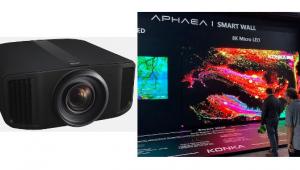OLED Is Here, and TV Will Never Be the Same

Allow me to put this in further perspective: We now have a single display technology that can achieve the much yearned-for combination of more-than-bright highlights, infinite black levels, accurate color, near perfect screen uniformity, and fast signal response time—a combination of attributes that has eluded any one display technology that’s been commercialized to date. Unlike the new 4K Ultra HDTVs now hitting the market, which represent an evolutionary and ultimately incremental improvement in image quality over today’s televisions, OLED is truly revolutionary—a quantum leap that I think most viewers, even those with less critical faculties than a Sound & Vision reviewer, will instantly see. And, notably, it is adaptable to both higher resolutions and, in time, we hope, to much larger sizes than the 55-inch screens offered in the first models.
This issue includes our first review of an OLED display, the Samsung KN55S9C, written by Al Griffin after a relatively brief evaluation at Samsung’s Quality Assurance Laboratory in Pine Brook, NJ. It’s accompanied by an OLED technology primer by Geoff Morrison that will give you some idea about how OLED works (in both its Samsung and LG Electronics versions). We expect to follow up in a future issue with a review of LG’s new 55EA9800 OLED HDTV from Tom Norton. At $9,000 and $15,000 respectively, neither of these sets is cheap. And from what we learned looking at the Samsung, and what we can surmise about the LG, neither is a perfect execution. But as you’ll read in Al’s review (and the additional comments from me and Geoff), OLED’s promise of ultimate contrast has been achieved, and the visual effect of this is just, well, stunning. With these HDTV product releases, we have turned a page.
There is more to come, of course. Sony and Panasonic have established a joint venture to produce OLED HDTVs, and we are waiting to see the fruits of that partnership. I’ve noted in earlier comments that these two companies each showed a 56-inch 4K OLED hybrid prototype at last January’s CES, and it was obvious to me that the combination of these two still-new technologies is what we will all eventually want in our next-gen televisions. How close we are to seeing those commercialized remains to be seen, and you can add some years before OLED at either 1080p or 4K becomes affordable to the masses. Questions also remain about OLED’s lifespan and about how quickly we can expect to see larger screens. But in the meantime, we are happy to see OLED finally emerge from the labs and enter the marketplace. This is one you’ll just have to see for yourself.





























































